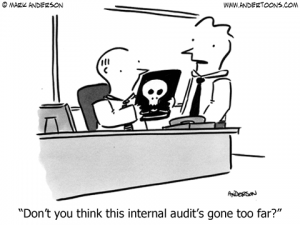 When a borrower defaults on its loan agreements, a lender may (among other options) sue to foreclose on its collateral and collect from borrower, or agree to amend the loan documents, or enter into a forbearance agreement.
When a borrower defaults on its loan agreements, a lender may (among other options) sue to foreclose on its collateral and collect from borrower, or agree to amend the loan documents, or enter into a forbearance agreement.
If the borrower can convince the lender that, within a reasonably short time, the borrower can cure the defaults and can perform or observe such new conditions as the lender may require in exchange for waiting, a forbearance agreement memorializing such new arrangements may be entered into by the parties.
IT’S NOT THE SAME AS A …
 A forbearance agreement should be distinguished from an amendment agreement under which the terms of the original loan are changed. Suppose that the borrower fails to repay the entire principal due on the maturity date of a loan.
A forbearance agreement should be distinguished from an amendment agreement under which the terms of the original loan are changed. Suppose that the borrower fails to repay the entire principal due on the maturity date of a loan.
In response, the lender could agree simply to give the borrower more time to repay the loan – by amending the loan agreement and promissory note to extend the maturity date to some future date. By amending the loan agreements in that manner, the lender would effectively eliminate the default and the lender’s rights arising from the default.
Thus the lender would no longer be entitled, for example, to accelerate repayment or to charge a higher, or “default rate” of interest as a remedy for the (now wiped clean) default.
THE BORROWER ACKNOWLEDGES …
 In a forbearance agreement, the borrower acknowledges that it has defaulted on its obligations, while the lender agrees that it will refrain from exercising its remedies for such defaults as long as the borrower performs or observes the new conditions set out in the forbearance agreement, and, by a certain date, cures the defaults.
In a forbearance agreement, the borrower acknowledges that it has defaulted on its obligations, while the lender agrees that it will refrain from exercising its remedies for such defaults as long as the borrower performs or observes the new conditions set out in the forbearance agreement, and, by a certain date, cures the defaults.
A forbearance agreement entered into after a maturity date default would typically provide that the lender will not exercise its rights arising from the default provided the borrower pays the lender the loan principal in installments over a stated period of time, often at a much higher rate of interest than under the original loan agreements.
 The lender may wish to impose additional conditions, such as requiring borrower to meet new or enhanced financial covenants or to pledge additional collateral to secure its repayment obligations.
The lender may wish to impose additional conditions, such as requiring borrower to meet new or enhanced financial covenants or to pledge additional collateral to secure its repayment obligations.
If the borrower fails to live up to the terms of the forbearance agreement, the lender may sue the borrower for a breach of that agreement and may also exercise any of its rights under the original loan agreements for the original defaults.
BEFORE ENTERING INTO ONE …
 Before entering into a forbearance agreement, the prudent lender will conduct a thorough due diligence review. The location and financial condition of each non-lender party should be re-examined.
Before entering into a forbearance agreement, the prudent lender will conduct a thorough due diligence review. The location and financial condition of each non-lender party should be re-examined.
A lender should verify that all financial covenants and ratios are in compliance; excepting, of course, non-compliant covenants and ratios set forth as defaults in the forbearance agreement.
A lender should obtain new tax, lien, and judgment searches against the borrower and guarantors, and, if anything adverse is identified, take appropriate steps to remove or mitigate risks thus raised.
The lender should conduct an on-site audit of all collateral to verify existence and location. The lien search should confirm the priority and extent of the lender’s security interest in the collateral. If the collateral is real property, the title insurance should be updated to ensure no adverse liens or encumbrances exist.
CONTAINS SOME “KEY” PROVISIONS …
A well-drafted forbearance agreement will contain a number of key provisions:
 • First, the agreement must recite with specificity the indebtedness owed and all of the defaults that the borrower and the guarantors have committed. The recitation should include both monetary and non-monetary defaults. In many ways this aspect of the forbearance agreement is tantamount to a borrower’s confession of judgment.
• First, the agreement must recite with specificity the indebtedness owed and all of the defaults that the borrower and the guarantors have committed. The recitation should include both monetary and non-monetary defaults. In many ways this aspect of the forbearance agreement is tantamount to a borrower’s confession of judgment.
The agreement should provide that: (a) the borrower and guarantors admit to their defaults; (b) the borrower and the guarantors have no defense against full payment of the indebtedness; (c) there is no material issue of fact as to the fact of such defaults; and (d) a summary judgment against the borrower and guarantors in the amount of the unpaid indebtedness is warranted and appropriate. A fundamental premise of the bargain in a forbearance agreement is that, should the borrower fail to live up to its obligations under the forbearance agreement, it is reasonable for the lender to have no further delays or other significant costs in obtaining the necessary judgment against the borrower and guarantors.
• Second, the forbearance agreement should state that the lender’s forbearance is conditioned upon, among other things, the borrower and guarantors strictly observing and performing all of their obligations under the loan agreements other than those relating to the enumerated defaults.
Any new default under the loan agreements must constitute a default of the forbearance agreement, which would give the lender the right to terminate its forbearance.
 • Third, if the loan agreements include any guaranties, the guarantors must each be a party to the forbearance agreement, which must provide that the guarantors reaffirm their obligations under their guaranties, notwithstanding the forbearance or any alterations to the loan indebtedness.
• Third, if the loan agreements include any guaranties, the guarantors must each be a party to the forbearance agreement, which must provide that the guarantors reaffirm their obligations under their guaranties, notwithstanding the forbearance or any alterations to the loan indebtedness.
Most well-drafted guarantees recite that changes to the terms of the guarantied indebtedness, including any forbearance, whether or not the guarantor consented to them, will not vitiate the guarantor’s obligations under the guaranty. However, courts often bend over backwards to construe strictly and limit a guarantor’s obligations, or even to excuse a guarantor when loan terms change, by applying vague principles of equity and fairness. To eliminate any risk of this, a prudent lender will require a guaranty reaffirmation in the forbearance agreement.
• Fourth, the forbearance agreement should provide for a liability release of the lender by the other parties. The release should cover, at a minimum, any loss or damage arising from: (i) the forbearance agreement; (ii) the loan documentation; and (iii) any other dealings the lender may have had with the borrower or any guarantor at any point. The release should be given by the borrower and each guarantor.
GET EXPERT HELP IF NEEDED …
 It is important to fully understand any forbearance agreement that the bank is requesting.
It is important to fully understand any forbearance agreement that the bank is requesting.
In many cases, the situation has become so desperate for the borrower, they will execute any document to relieve the pressure from the lender.
As in the initial loan, it is important that the borrower ensures that they understand the new commitment and they are capable of remaining in compliance.
The use of an experienced business and contracts attorney and a qualified financial advisor is critical.
Revitalization Partners specializes in improving the operational and financial results of companies and providing hands-on expertise in virtually every circumstance, with a focus on small and mid-market organizations. Whether your requirement is Interim Management, a Business Assessment, Revitalization and Reengineering or Receivership/Bankruptcy Support, we focus on giving you the best resolution in the fastest time with the highest possible return.


